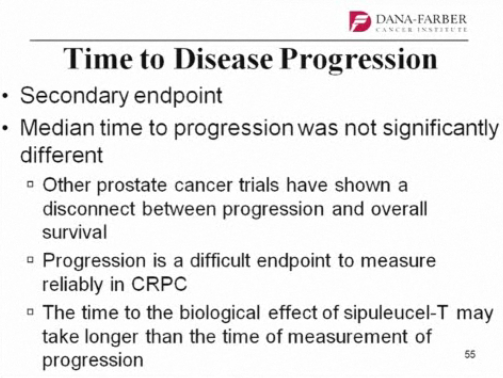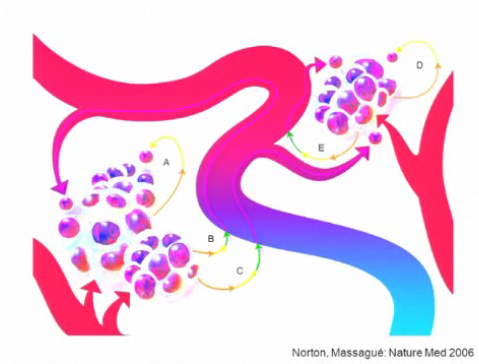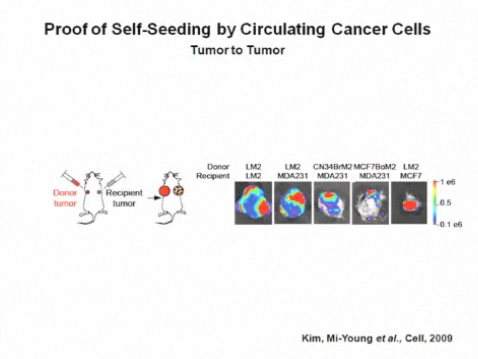One of the hot topics in cancer this year has definitely been the impressive clinical trial results from crizotinib (Pfizer) in ALK rearrangements seen in a small proportion of people with non-small cell lung cancer (NSCLC). We’ve covered the data in several posts so far (see here and here if interested in the data at ASCO, ESMO and the NEJM article).
Earlier this year, Dr Jack West posted an excellent webinar with Dr Ross Camidge (University of Colorado, Denver) on his Cancer GRACE forum discussing the molecular biology of ALK rearrangements in lung cancer. It’s well worth checking out and a great cause if you’re looking to support a non-profit that offers a lot of valuable free education for patients and caregivers (full disclosure: I’m one of the unpaid GRACE Board members). Video, transcript and slides are all available through the link for physicians, researchers and patients alike.
Since then, the data has been presented at several meetings and some new articles have appeared in several journals, including the New England Journal of Medicine and Clinical Cancer Research (references below). Dr Camidge is one of the clinician researchers involved in both papers, so I thought it would be a good idea to catch up with him and find out some more details beyond the clinical data. He kindly gave up some time to answer my questions, which I have posted as italicised quotes below as part of our ongoing Making a Difference interview series.
1. Do ALK and EGFR mutations overlap or are they mutually exclusive?
They are almost mutually exclusive. So, for example, we have shown if you exclude patients who are EGFR mutant you increase the hit rate when you then test for ALK (Camidge et al, Clinical Cancer Research, November 2010).
However, all ‘rules’ in biology have exceptions and as more people are tested rare double molecular drivers (ALK and EGFR or ALK and KRAS, for example) have been found.
The significance of these is uncertain in terms of which drugs they will best respond to (indeed the two changes may not be in all cells in the same cancer and may reflect a mixed population), but emphasises the point that, while there are various strategies you can use to find most ALK gene rearrangements, altering the cost effectiveness of the screening among other things, the only way to find all of them is to screen everyone.
2. Does the histology matter with ALK mutations? Are are there any subsets where ALK mutations predominate?
Small note: technically in lung cancer, we are mostly talking about ALK gene rearrangements, not mutations as the means through which ALK is activated to drive the cancer. ALK mutations occur in neuroblastoma and may be one mechanism of ALK gene rearranged lung cancer developing acquired resistance to crizotinib, but they are not thought to be the primary oncogenic event in most lung cancer cases.
Ok, that said, ALK gene rearrangements, following on from the first point are most common in adenocarcinoma, in those with less than 10 pack years of smoking and who are EGFR and KRAS wildtype (same camidge ref above), in our series when all of these filteres were applied 45% of those we tested were positive for an ALK gene rearrangement.
However, as mentioned, exceptions to all of these rules exist and I have ALK-positive patients among those who were heavy smokers, who had squamous or large cell cancers, and who had co-existent EGFR and KRAS mutations – they are just rarer in these subgroups.
To use histology as one example – there are multiple studies that show that the agreement on histology between expert pathologists is at best ‘moderate’ – therefore deciding who should get a definitive test (ALK FISH) on the basis of a very non-definitive test (subjectively categorized histology) seems less than logical to me.
3. How would you describe the crizotinib data reported in the NEJM recently? How important are these results for patients with NSCLC?
The results are enormously important for several reasons.
Firstly, I believe they will encourage folk to get everyone with NSCLC who has available tissue screened for ALK – a quick back of the envelope calculation suggest about 98% of those who are ALK-positive in the US alone have not yet been tested. Progress will only happen when we finesse our off-the-peg style of oncology with some real 21st century tailor-made medical approaches. And this will apply to many other molecular subtypes of cancer in the future, not just ALK.
Secondly, the results are now making drug companies take notice of the fact that trying out molecular sensitivity hypotheses – ie asking who does my drug really work in – is now feasible very early on in drug development and should dramatically increase the chances of successful registration, rather than trying to give one drug to everyone and then only figuring out in retrospect who it does or doesn’t work in.
Finally, the results, at last, offer true hope to those affected by cancer, offering a glimpse of an achievable future of long term control through breaking down the traditional one size fits all model.
4. What about resistance to crizotinib; do we know of any possible mechanisms yet and if so, how would this change therapeutic strategies in the future? Could new combinations be tested in this setting to help overcome this?
Resistance does happen, but this isn’t a surprise. Sometimes this is simply that in some parts of the body, like the brain, the drug doesn’t penetrate so well and cancer seeds lurking in these areas can grow as if they were not exposed to the drug. In such cases, giving something like radiation treatment to the brain, but keeping the crizotinib going to keep suppressing all the disease outside of the brain, may well be the best thing to do – and we showed several examples of this actually being done at ESMO this year (see Oncology Tube).
However, resistance can also occur outside the brain. Cancers are genetically unstable and all the cells in a cancer are just a little but different from one another. Most of the time this diversity doesn’t mean anything, but when you change the environment, by using a drug like crizotinib, that diversity lets Darwinian evolution start to play out. Subclones that differ just enough to keep growing can then manifest as resistance, growing up while the other cells continue to be suppressed. What differences create these resistant subclones continues to be explored.
Only one mechanism has so far been reported – two separate new mutations within the ALK kinase domain that make it more resistant to crizotinib – one of which is similar to the T790m gatekeeper mutation described in EGFR mutant lung cancer that is selected out when such cancers are exposed to erlotinib or gefitinib.
However, with only a single case report we do not yet know the frequency with which this mechanism will be used by ALK positive cancers to become resistant. If other changes become known, then conceivably rationale combinations of drugs such as crizotinib plus something against a second driver mutation, could then be explored. Plus patients may still have many traditional chemotherapies to fall back to, just because a patient is ALK positive doesn’t mean we should abandon all our other anti-cancer strategies, we might just need to change the priority ordering of them.
5. Are ALK mutations expressed or mutated in any other cancers other than NSCLC? If so, which ones?
Yes – ALK gene rearrangements drive subsets of lymphomas, inflammatory myofibroblastic tumors (a rare sarcoma) and ALK mutations drive some neuroblastomas. ALK expression has been reported in several other cancers, but the data that it is driving these cancers is not yet mature.
6. Are there any other ALK inhibitors in development? If so, which ones, and how might they be different from crizotinib?
There are, but most of these have not yet even entered clinical trials to date. Companies developing them include Lilly, Novartis, Cephalon and Ariad. Some of these claim to be more potent, eg against some of the resistant forms of ALK that might arise, but whether these drugs will be able to produce exposures high enough or tolerable enough to achieve activity against normal or these mutant forms of ALK in patients remains to be seen.
7) There’s been a lot of chatter in patient forums about some patients getting tests, thinking they were ALK positive and then being denied access to the trials because another test suggested they were negative for ALK. How accurate is the ALK test, are there many false positives? How will this work in practice with a broader population in the community, assuming crizotinib is approved and requires molecular testing for the ALK mutation as part of the approval?
Yes – for the clinical trials of crizotinib most of them require an ALK test to be positive via a specific provider (ALK FISH testing via Abbott Laboratories). So this means folk who have tested positive through some other provider have to be retested and sometimes the two results don’t agree. The exact false positive and false negative rates are not yet clear as only those who test positive through the central Abbott Lab get the drug, so there is no true comparator group. That said, the original 7 phase I sites (Colorado, Boston, New York, Chicago, California, Seoul and Melbourne) also have access to the drug through the phase I route, which does not require central testing – although it does mandate FISH as the test method used.
Certainly some folk who tested positive via FISH locally but not via the central lab have responded, suggesting the central lab has had some false negative results. The numbers are small, but in an ideal world they would be zero. If ALK testing via means other than FISH is used, there we really do not know how the two stack up. RT-PCR probably only detects a subset of all possible ALK gene rearrangements so may miss some who could benefit form the drug, however whether its sensitivity is so high it may also capture some that are missed by FISH testing is unknown.
Immunohistochemistry is highly variable and probably depends on the antibody used, the scoring system, the tissue preparation and the experience of the scorer. Some nice data from the mayo clinic suggests IHC in experienced hands may be good at ruling in most positives, and ruling out most negatives, but there is still an equivocal group where the result could go either way.
Depending on what the label for crizotinib looks like if it gets approved, whose test is easiest, cheapest or best will have to be played over time. At present the only test that has unequivocally been associated with benefit from crizotinib is the ALK FISH test and this is the test (done properly in an expert facility) that all others will have to be compared to at the end of the day.
All in all, this is a very promising development for people with lung cancer and ALK gene rearrangements. Responses in heavily pre-treated patients in the order of +60% are most unusual and thus this potentially offers another example where molecular profiling can help match the most appropriate treatment for some people with lung cancer. Dr West summed it up nicely in the his post regarding the ALK webinar with Dr Camidge:
“Though this is still a small population, the evidence is very convincing that ALK inhibitors can have a major impact for these patients, with the potential that we may also identify agents that can offer additional benefit to patients with an ALK rearrangement.”
References:
 Kwak, E., Bang, Y., Camidge, D., Shaw, A., Solomon, B., Maki, R., Ou, S., Dezube, B., Jänne, P., Costa, D., Varella-Garcia, M., Kim, W., Lynch, T., Fidias, P., Stubbs, H., Engelman, J., Sequist, L., Tan, W., Gandhi, L., Mino-Kenudson, M., Wei, G., Shreeve, S., Ratain, M., Settleman, J., Christensen, J., Haber, D., Wilner, K., Salgia, R., Shapiro, G., Clark, J., & Iafrate, A. (2010). Anaplastic Lymphoma Kinase Inhibition in Non–Small-Cell Lung Cancer New England Journal of Medicine, 363 (18), 1693-1703 DOI: 10.1056/NEJMoa1006448
Kwak, E., Bang, Y., Camidge, D., Shaw, A., Solomon, B., Maki, R., Ou, S., Dezube, B., Jänne, P., Costa, D., Varella-Garcia, M., Kim, W., Lynch, T., Fidias, P., Stubbs, H., Engelman, J., Sequist, L., Tan, W., Gandhi, L., Mino-Kenudson, M., Wei, G., Shreeve, S., Ratain, M., Settleman, J., Christensen, J., Haber, D., Wilner, K., Salgia, R., Shapiro, G., Clark, J., & Iafrate, A. (2010). Anaplastic Lymphoma Kinase Inhibition in Non–Small-Cell Lung Cancer New England Journal of Medicine, 363 (18), 1693-1703 DOI: 10.1056/NEJMoa1006448
Camidge, D., Kono, S., Flacco, A., Tan, A., Doebele, R., Zhou, Q., Crino, L., Franklin, W., & Varella-Garcia, M. (2010). Optimizing the Detection of Lung Cancer Patients Harboring Anaplastic Lymphoma Kinase (ALK) Gene Rearrangements Potentially Suitable for ALK Inhibitor Treatment Clinical Cancer Research, 16 (22), 5581-5590 DOI: 10.1158/1078-0432.CCR-10-0851

![]() Gattinoni, L., Ji, Y., & Restifo, N. (2010). Wnt/β-Catenin Signaling in T-Cell Immunity and Cancer Immunotherapy Clinical Cancer Research, 16 (19), 4695-4701 DOI: 10.1158/1078-0432.CCR-10-0356
Gattinoni, L., Ji, Y., & Restifo, N. (2010). Wnt/β-Catenin Signaling in T-Cell Immunity and Cancer Immunotherapy Clinical Cancer Research, 16 (19), 4695-4701 DOI: 10.1158/1078-0432.CCR-10-0356

 According to the
According to the